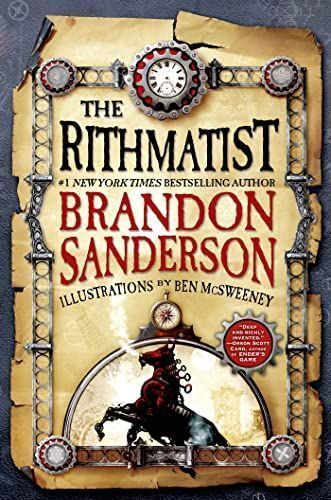
The Rithmatist
This is a fast-paced adventure for readers of all ages by bestselling author Brandon Sanderson, master of fantasy fiction. Here, in a school for the magically gifted, your talent could cost you your life... Young student Joel is fascinated by the magic of Rithmatics, but few have the gift and he is not one of them. Undaunted, Joel persuades Professor Fitch to teach him about this geometric magic. For although Joel can't infuse his protective lines and circles with power, or bring his chalk-drawn creatures to life, he can really understand how it works. However, a daunting test lies ahead, when someone starts kidnapping top Rithmatic students at his school, Armedius Academy. Since he's not a magic user, Joel appears to be safe and he's desperate to investigate and prove himself. Then people start dying - but can Joel really stop a killer alone? He'll need the help of Rithmatist apprentice Melody, as even more students disappear. Together, they must race to find clues before the killer notices them - and takes them out too. The Rithmatist is a New York Times bestseller and will be enjoyed by adult and young adult readers alike. The book features illustrations by Ben McSweeney, which depict the magical elements of the novel with great elegance and insight.
Reviews
Ariel@achn
Julia Lotz@missfoxyreads
James Eaton@jameseaton
Mundy Otto Reimer@mundyreimer
Caroline Mao@northcaroline
Tom Turner@tomjsturner
Anastaciya@anastaciya
Giulia @fcbgiulia
Adam@adam
Sean Bannen@priority
Jamal Jones @jamalisher
Amanda Marie Nguyen@withamandamarie
Taylor Murphy@tayloramurphy
Roy B Rowan@redking353
J@knightdips
Mitch Stewart@mitchbones
Sean Leach@kickdaddy
Scott Robertson@spr
Andy@handyandy
Darren C.@darren_c
Rodrigo Gaona@gaonuk
Katelyn Woodard@kwoodard87
Thomas DeCelle@tdecelle
Valeria Rodriguez@valeriusrc